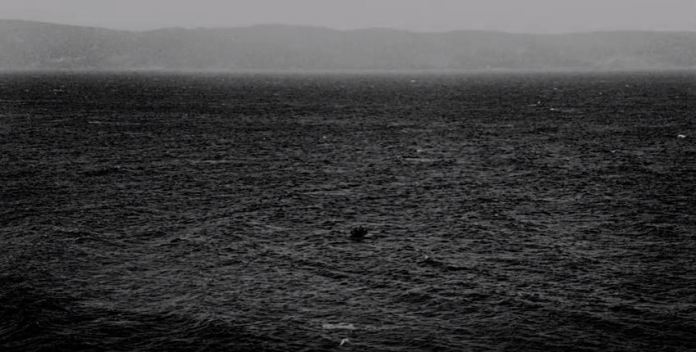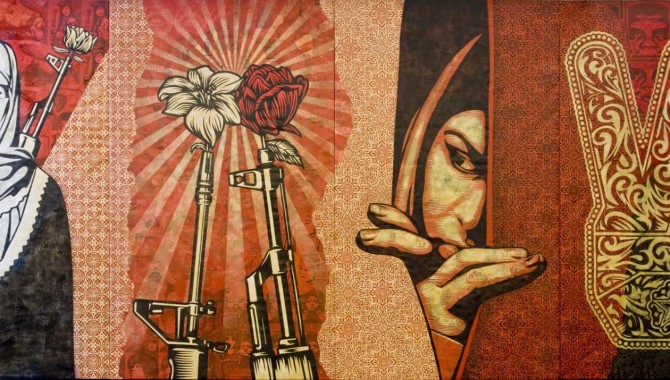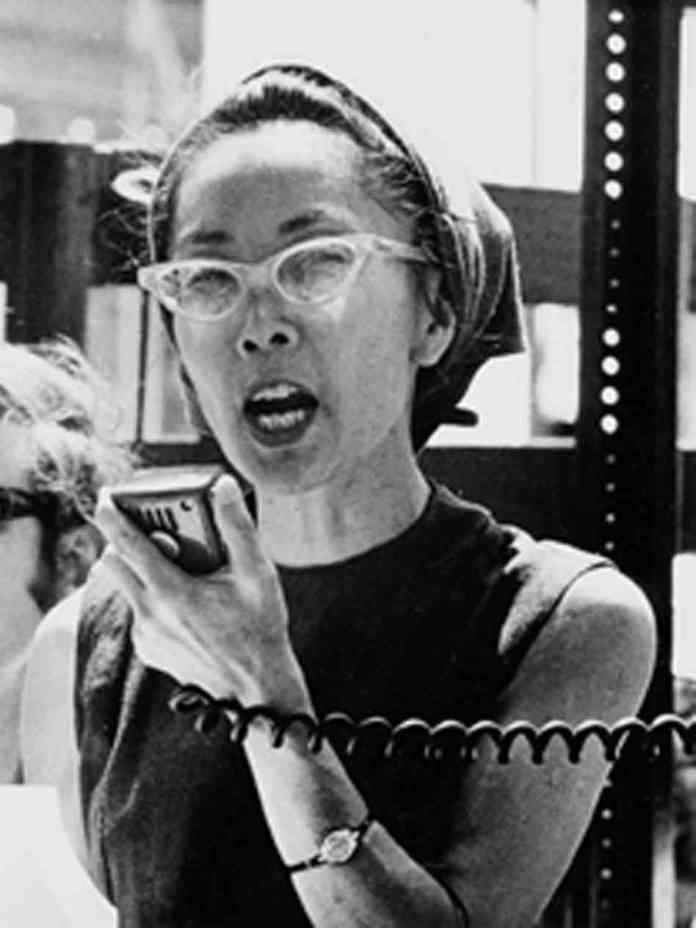 /image © Alice Pasquini, Syrian Protest Women/
/image © Alice Pasquini, Syrian Protest Women/
I met Aida Baghdadi* in Beirut, at a conference we were both attending. She was one of the first people I noticed, standing confident, with long beautiful hair and determined look in her eyes. Baghdadi is a feminist, a lawyer working with Syrian political prisoners and abused women in refugee camps and shelters. She is well educated, passionate and strong.
I can see it in her face, the way she talks, how excited she gets when we discuss the situation in Syria and possibilites for a change. It is not easy developing civil society under the regime’s ever-present watch, but she and her fellow activists already got used to it – they meet in private apartments, basements, and sometimes – in other countries, like here, in Lebanon.
I tried to catch her to take away some time from her busy schedule and managed to spend some hours talking to her last couple of days. She tells me she has been a lawyer since 2007, and is working for the Equal Citizenship Center in Damascus.
“We work on many things, like the projects with EFI Initiative, but also different workshops and trainings. We try to educate people in Syria, talk to them about international and human rights, and build a new base, a platform for civil society. I provide legal opinion and also defend people, primarily women, in courts, informing and empowering them, to know about their rights and ask and fight for their rights”, Aida tells me.
Her eyes are fixed on an inivisible point ahead of her, like she’s remembering all the people she works with and trying to bring them to life in our conversation. She tells me how it is particularly hard to work in refugee camps inside Syria, because there’s often wrong information from the regime about the number of camps and people in them.
Women have it really hard, they are not only exposed to violence, but also discrimination in laws and the constitution. For human rights organisations it is hard to do any activity at all, human rights and women’s rights remain unimportant issues under the regime’s control or/and under the control of armed Islamist groups.
“That is what we really want to change – our laws and our constitution, because they are the basis of our society. We are working on new, better laws, for men and for women. I hope we’ll get a chance to implement them one day”, Aida explains to me.
She describes how some places in Syria have left women totally deseperate: “Women are the biggest losers of this war, and all wars, I think. Young men die, or they fight or leave the country, all that is left in some places now are women wearing black. These are women that lost their children, their husbands, women who try to do anything, work were they can and how they can – to survive and provide for themselves”.
She explains how these issues demand changes on all levels. Her association is focused on the separation of the religion from the state – secularism and democracy, and in relation to that they work hard to introduce the concept of citizenship to Syrian people. I aks her about cooperation with religious leaders, and her answer begins with a deep sigh. “Cooperation with the religious leaders is almost impossible, it doesn’t exist. It is because they don’t want to change the situation, this is good for them, it is an envinronment in which they prosper”, she tells me.
Regime already arrested some of the people from her team, but she was lucky so far. Still, there is a constant fear that haunts her. “I am scared every time I am giving a passport at the border control – I might get arrested and just disappear and nobody will know what happened to me”, she explains.
The situation is the same for a lot of activists in Syria, and many of them are in even worse situations – at risk of arrest and murder cover-ups, not just by the regime but by Islamist groups. Comparing life in Syria now and before, she insists that good life for all people was never a reality, good life was a reality only for people with special connections, religious background, or lots of money.
She asks how it is possible that during the last ten years of Assad’s rule there were outside impressions that the economic situation is good, when there were more than two milion people below the poverty line. Talking about economy, she reflects on the economic sanctions EU imposed on Syria.
“Those sanctions did nothing to hurt the regime, it was left standing strong, because it has found other resources. But sanctions did have an impact on regular people, the poverty spread out, people were suffering, in many hospitals there was no medicines. There was a big pressure on people in their everyday life, it’s hard to even imagine how some of them managed to survive”, Aida tells me.
She tinks that the control and support of individuals, certain groups and privileged parts of society, is what saved the regime all these years. When mentioning Daesh, she says Assad is to blame because dictators bring problems, they allow the space in which terrorism is born, and that is when the money flows in and weapons flow in.
“Daesh is a complicated web, a lot of foreigners fight for Daesh, they have good financing and, among other things, they control a substantial amount of oil. But, you know, I don’t think it is the main problem. Keep in mind that many of their supporters are recruited from the outside, so if there is a real intention to get rid of them, it could be done.
But why is that not happening? Let’s start from 2011, when the revolution started. People went out to the streets, and the regime sent the army on the streets. As time moved on, we realized that there are rebels and radicals provided with money from Saudi Arabia and Qatar, and citizens who really wanted changes found themselves between them and the regime, between two evils, two fires.
And now all of these countries joined in – Iran, Russia, Turkey, US, France – all of them with their particular interests in Syria. US and Russia mainly kill civilians with their strikes, they barely did any harm to Daesh. All of these interests are what frightens me. Even when the war ends, there is a possibility that Daesh will stay, less powerful but present, like a destabilizing factor many are counting on, like a match that can be lit up when necessary.
And all of this war, it’s all profit for the military–industrial complex, and it’s a profit many our counting on and will not be willing to let go of it. It’s also about showing off power and establishing power relations between countries, so – we have to consider so many things and not look at one thing isolated, like Daesh”, Aida explains.
She compares the situation with Iraq, saying both countries have a lot in common and might go through the same process – Syria could also have decades of instability and crippling conflicts, even after the war ends. She thinks political solutions might solve the war, but they will not heal the country, and the big question is – what will remain off the country after the war.
When talking about healing the country, she emphasizes on the issue of political prisoners Syria had for many decades (and still has), and the massacre in Hama (1982) that is still unresolved. “Hama is important in the collective memory of the Syrian people, taking responsibility for the massacre is an important step in moving forward in our future”, she says.
In her work, she met many political prisoners. It made her realize that many people no longer find meaning in life in Syria, they feel completely helpless, and it pushes them to the edge. “Some of them may have done some bad things, but you realize that in many cases they actually had no way out, their choice was total blackness, no matter where they turn. When you realize that, it just breaks you”, she tells me, her voice quavering. It’s hard for her to talk about all this without getting emotional.
She tells me about her friend’s husband, Bassel Safadi, a prisoner who was held captive for three years. His wife Noura knew where he was and she could visit him from time to time, but almost three months ago “somebody” came to the prison and took him away – nobody knows where he is now. His wife was told only that he was deleted from the list of prisoners in the prison in which he was before.
 /Waiting by Noura Ghazi Safadi/
/Waiting by Noura Ghazi Safadi/
She and Bassel’s friends started a petition, wrote to the UN, made hashtag #freeBassel and a facebook page, in order to put pressure on the Syrian government to get an answer about his disappearance, but all efforts have so far been unsuccessful. Bassels’s wife Noura, human rights lawyer, is still relentlessly searching for answers. During the waiting period she has written a wonderful book of poetry Waiting, in which she writes, lifting her voice and recording their love story and the story of Syria.
Aida continues explaining the situation: “People get taken away and you don’t know where they are… People are leaving the country, this is like a big fire that is spreading out, all over the country, with every new country involved and fighting in Syria. You can take a couple of years of war maybe, but more than that, I don’t know.
With every new year, it gets harder and harder. There’s only as much one can take. Civil society is losing people every day, and that is why it is important to work with the young people, but you cannot insist or ask of anyone to stay in the country. People’s lives are at stake, their future is at stake. You have to understand when they say that they want to leave. That is why it is so important to stop this war”.
Her complaint is that nobody deals with the main issue, with the source of the problem. If Europe really has issues with the refugees, she says, if they want to stop refugees from coming to Europe, they need to do one thing and one thing mainly – stop the war. Syrian people will stay in their country, Syrian people will come back to their country – if there is future, Aida is sure about that.
Her special hope are the women – a lot of women, strong women, women that still have some resources and are engaging in civil society efforts, but also women who are unprotected, poor women without anything and anybody – those barely surviving, but still fighting.
She wants to continue studying international law and will go for an exchange programme to Italy to study for five months, and then come back to Syria and continue her work. Finishing our conversation, she takes a deep breath. We both have tears in our eyes.
“Time goes by, with every new hour and day more people die, their lives are destroyed… I don’t want to see anyone die, not ‘regular’ people and not the regime people. I just want to work and live without the constant fear, without thinking of me or my family going to prison or dying, I want to be able to think and talk about Syrian future without sadness”, Aida concludes.
*Name changed due to security issues
• • •
This interview was also published in Croatian, on Libela.
 /from the video The Camp/
/from the video The Camp/ /photo: Shepard Fairey, Obey Middle East Mural/
/photo: Shepard Fairey, Obey Middle East Mural/





























